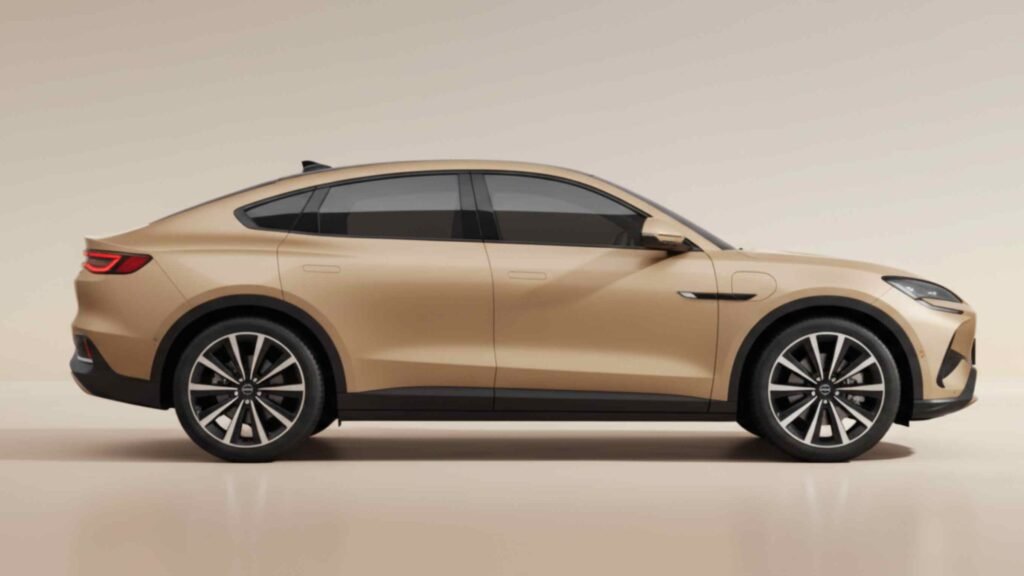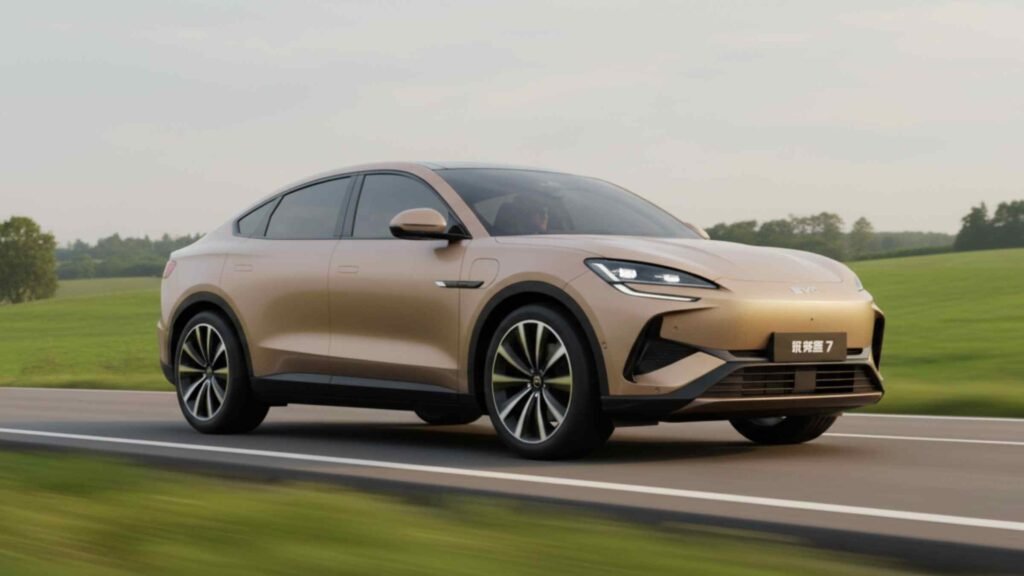
The electric SUV market is evolving faster than ever, and every major automaker is racing to claim a share of the global spotlight. Among them, BYD has quickly emerged as a powerhouse, moving from a regional Chinese brand to one of the world’s top EV players. The company’s latest model, the BYD Sealion 7, has already captured attention as a potential rival to the Tesla Model Y, offering a mix of range, performance, and competitive pricing.
BYD already fields bold models like the Han L and Yangwang U8 in its lineup, showing that the brand is not afraid to challenge premium automakers with technology and design innovation. The Sealion 7 builds on this strategy, combining sleek Ocean Series styling with BYD’s proven Blade Battery and advanced platform engineering. This article explores its background, technical specifications, real-world performance, pricing, and how it stacks up against competitors to help you decide whether the Sealion 7 deserves a spot on your shortlist.
Table of Contents
Background and Launch History
The BYD Sealion 7, also known as the BYD Sealion 07 in China, is part of the brand’s Ocean Series of electric vehicles. It was first revealed at the 2023 Guangzhou Auto Show, where it made headlines for its sleek design and strong specifications, positioning itself as a direct competitor to global EV leaders.
Naming and Positioning
The Sealion 7 carries dual branding, being referred to as the Sealion 07 in the Chinese domestic market and Sealion 7 internationally. It sits between BYD’s smaller Seal and the larger Tang SUV, giving buyers a mid-sized option in the family SUV segment.
Global Debut and Markets
Following its initial reveal in China, the Sealion 7 began entering other markets in 2024 and 2025, including Australia, Hong Kong, and select European countries. Early sales reports show promising traction, with the Sealion 7 even outselling the Tesla Model Y in Australia in certain months, highlighting its potential as a global contender.
Role in BYD’s Ocean Series
The Sealion 7 is strategically important to BYD’s Ocean Series, which emphasizes marine-inspired designs, advanced aerodynamics, and electric-only platforms. It demonstrates the company’s goal of expanding beyond China and establishing a strong foothold in competitive international EV markets.
Technical Specifications and Powertrain
The BYD Sealion 7 is built on BYD’s advanced e-Platform 3.0 architecture, designed specifically for pure electric vehicles. It incorporates the brand’s Blade Battery technology, which is well regarded for safety and efficiency.
Battery Options and Range
The Sealion 7 comes with multiple battery pack options, offering usable capacities around 71 kWh and 87 kWh. Depending on the configuration, the official driving range is rated between 550 km and 610 km under the CLTC cycle, though real-world figures may vary.
Motor and Drivetrain Choices
Buyers can choose between rear-wheel drive and all-wheel drive versions. The standard model features a single rear motor producing about 230 kW, while the dual-motor performance variant generates up to 390 kW and 690 Nm of torque. This setup enables acceleration from 0 to 100 km/h in as little as 4.5 seconds.
Charging and Efficiency
Fast charging capability allows the Sealion 7 to charge from 10% to 80% in roughly 30 minutes under ideal conditions. It also supports vehicle-to-load (V2L) functions, giving owners the flexibility to power external devices during trips.
Platform Advantages
The e-Platform 3.0 not only enhances efficiency but also improves driving dynamics, offering a low center of gravity, optimized weight distribution, and integrated thermal management for better performance and durability.
Design and Interior Features
The BYD Sealion 7 adopts the Ocean X design language, giving it a sleek and modern appearance that blends aerodynamic efficiency with bold styling. Its coupe-like roofline and sharp body lines distinguish it from more conservative family SUVs.
Exterior Styling

The front fascia is characterized by slim LED headlights and a smooth, grille-free design typical of EVs. Aerodynamic sculpting helps reduce drag, improving range and efficiency. The Sealion 7’s proportions place it squarely in the midsize SUV category, offering a strong road presence.
Cabin and Technology
Inside, the Sealion 7 emphasizes tech-focused luxury. A large central touchscreen, digital instrument cluster, and rotating display (in some trims) are focal points. Premium trims add soft-touch materials, a panoramic glass roof, and customizable ambient lighting, creating a modern driving environment.
Comfort and Practicality
With generous seating for five, the Sealion 7 provides ample legroom and headroom. Rear passengers benefit from a flat floor design and convenient charging ports. Cargo space is competitive within its segment, making it versatile for daily use and family travel.
Safety and Driver Assistance
BYD equips the Sealion 7 with an advanced ADAS suite, including adaptive cruise control, lane-keeping assist, blind-spot monitoring, and automated parking features. Multiple airbags, high-strength body construction, and advanced sensors aim to secure top safety ratings in major markets.
Performance and Real-World Reviews
While the official specifications of the BYD Sealion 7 highlight strong acceleration and long range, real-world impressions provide a clearer picture of how it performs on the road.
Driving Dynamics
The dual-motor version delivers sharp acceleration, reaching 100 km/h in under 5 seconds, putting it on par with performance-focused EVs. Reviewers note stable handling thanks to the low center of gravity, though the ride can feel firm over uneven surfaces.
Range and Efficiency
On-paper range figures reach up to 610 km, but independent tests and user feedback suggest real-world results are closer to 450–500 km depending on driving conditions. Efficiency remains competitive, particularly in city driving where regenerative braking maximizes range.
Market Reception
Early feedback in regions such as Australia has been strong, with the Sealion 7 even outselling the Tesla Model Y in certain months. Reviewers from outlets like Business Insider and Carwow have praised its value for money and tech features while pointing out that cabin noise and material quality could improve.
Strengths and Critiques
Owners highlight fast charging and advanced driver-assistance features as key advantages. Criticisms include slightly harsh suspension tuning and interior finishes that may not feel as refined as premium European rivals, though these are balanced by the SUV’s affordability and feature set.
Pros and Cons
Balancing the strengths and weaknesses of the BYD Sealion 7 helps clarify whether it is the right SUV for prospective buyers.
Pros
- Strong acceleration and performance, especially in the dual-motor variant
- Competitive pricing compared to Tesla, Kia, and Hyundai alternatives
- Advanced Blade Battery with a reputation for safety and longevity
- Spacious interior with generous tech features and ADAS capabilities
Cons
- Real-world driving range is lower than official claims
- Ride comfort and interior refinement fall short of some premium rivals
- Cabin noise levels can be noticeable at highway speeds
- Limited availability in certain global markets as rollout is still expanding
Competitor and Market Comparisons
The BYD Sealion 7 enters one of the most competitive EV segments, where established players and newcomers are vying for dominance.

Tesla Model Y
As its most direct rival, the Tesla Model Y offers brand recognition, software superiority, and an expansive charging network. However, the Sealion 7 undercuts it on price and provides more standard safety features.
Kia EV6 and Hyundai Ioniq 5
Both Korean SUVs bring stylish designs and strong performance. The Kia EV6 matches the Sealion 7’s speed in some trims, while the Hyundai Ioniq 5 offers a more comfortable ride. BYD counters with more aggressive pricing and higher range figures on paper.
Volkswagen ID.4
Volkswagen’s contender is practical and well-built but lacks the performance punch of the Sealion 7. BYD positions itself as a more exciting and affordable option for families seeking modern tech.
Internal Brand Competition
BYD also offers other Ocean Series vehicles like the Seal and Sealion 6. For buyers who want a larger or more luxurious choice, BYD’s Han L or Yangwang U8 sit further up the lineup.
Pricing and Availability
Pricing varies by region, but the BYD Sealion 7 is consistently positioned as a value-focused competitor in the mid-size SUV class.
Pricing in Key Markets
- China: Starting from approximately $28,500 USD (converted from RMB) for the base version
- Australia: Around $48,000 to $52,000 USD depending on trim and configuration
- Europe (projected pricing): Expected between $45,000 and $50,000 USD once officially launched
Trim Levels
- Premium (RWD): Equipped with a single motor and longer range
- Performance (AWD): Adds a second motor for maximum power and quicker acceleration
Market Expansion
Currently sold in China, Hong Kong, and Australia, the Sealion 7 is gradually entering Europe. Rumors suggest BYD may consider expanding into North America, though no official confirmation has been made.
Conclusion and Outlook
The BYD Sealion 7 is proof that BYD is no longer just a regional automaker but a serious global EV competitor. It combines strong performance, advanced safety technology, and competitive pricing, making it a compelling choice for buyers seeking an alternative to the Tesla Model Y or Kia EV6.
While some compromises exist in ride comfort and cabin refinement, its affordability and feature-packed trims offset these drawbacks. For drivers who value range, acceleration, and high-tech equipment at a more accessible price, the Sealion 7 stands out as one of the most attractive midsize EVs in 2025.
Frequently Asked Questions
What is the real driving range of the BYD Sealion 7?
The official rating reaches up to 610 km, but real-world tests suggest closer to 450–500 km depending on driving style and conditions.
How fast can it charge?
With DC fast charging, it can go from 10% to 80% in around 30 minutes under optimal conditions.
Does it offer all-wheel drive?
Yes, the Performance trim includes a dual-motor all-wheel drive system producing up to 390 kW of power.
How much does the BYD Sealion 7 cost?
Prices start around $28,500 USD in China and reach up to $52,000 USD in markets like Australia.
Is it available in the United States?
As of 2025, the Sealion 7 is not officially sold in the U.S., though it is available in China, Hong Kong, Australia, and select European countries.
How does it compare to Tesla Model Y?
It offers similar acceleration and higher on-paper range at a lower price, though Tesla maintains an advantage in software and charging infrastructure.